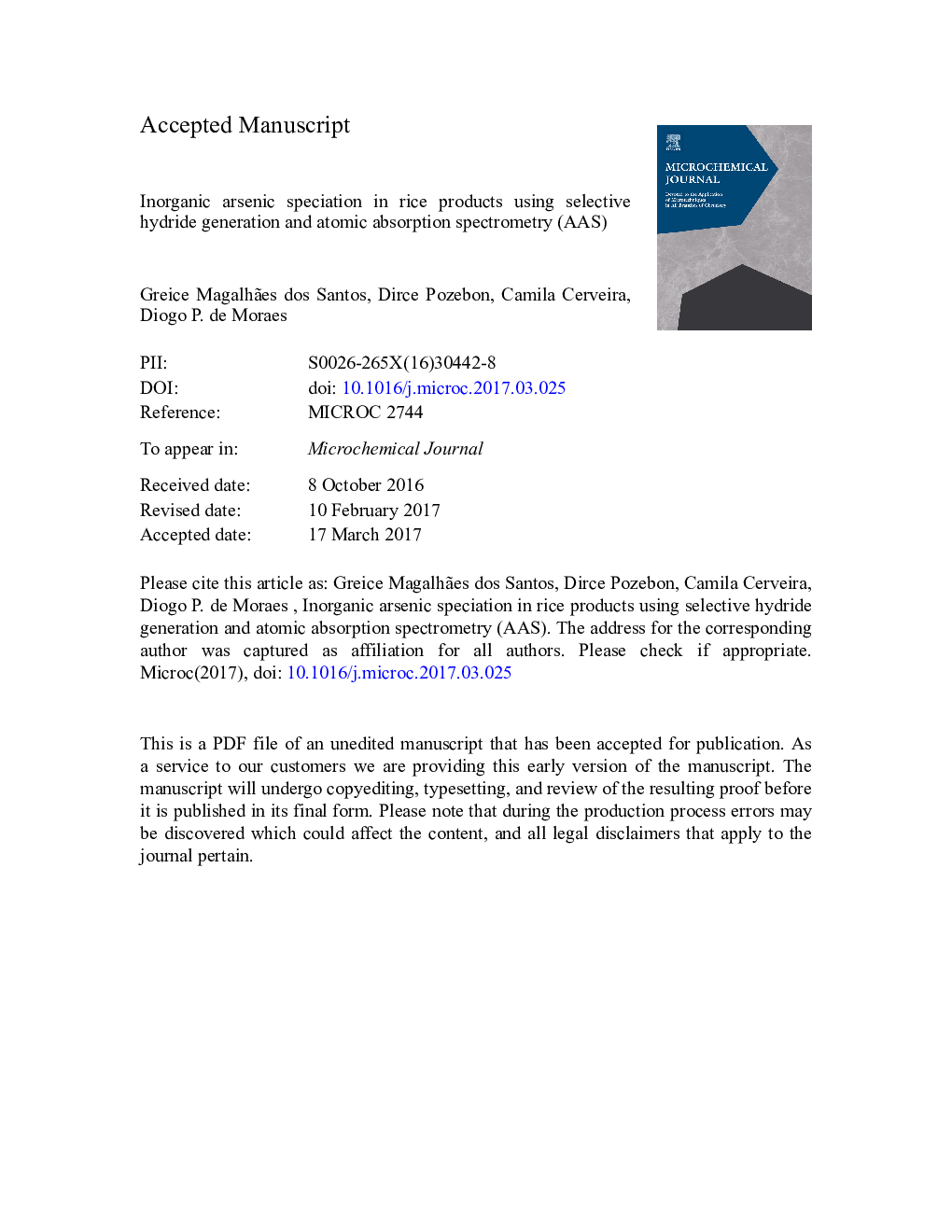| Article ID | Journal | Published Year | Pages | File Type |
|---|---|---|---|---|
| 5139030 | Microchemical Journal | 2017 | 31 Pages |
Abstract
The present study is about chemical speciation analysis of inorganic As (iAs) in rice products using hydride generation atomic absorption spectrometry (HG-AAS). Selective generation of arsine from As(III) was achieved with 0.1% (m/v) NaBH4 and 10 mol Lâ 1 HCl. Inorganic arsenic (iAs) was determined by As pre-reduction (in 4% m/v KI + 0.8% m/v ascorbic acid + 1.9 mol Lâ 1 HCl) followed by determination under the same conditions used for As(III). The As(V) concentration was estimated by difference among iAs and As(III). Total arsenic (tAs) in the samples of solid rice products was extracted with 2% (m/v) K2S2O8 and 10% (m/v) HNO3 whereas liquid rice products were simply diluted with 0.28 mol Lâ 1 HNO3. Samples of rice products (flour, biscuit, pasta, milk powder, cake, dairy beverage, vinegar, wine and beer were analyzed). For solid products, the limits of quantification (LOQs) of the method were 5.4 ng gâ 1 As(III), 15 ng gâ 1 iAs, and 23 ng gâ 1 tAs. The mean concentrations of As(III), iAs, and tAs ranged from 12.3 to 71.8 ng gâ 1, 29.8 to 82.9 ng gâ 1, and 35.8 to 136 ± ng gâ 1, respectively. In most cases, iAs concentration was approximately 60% to 80% of tAs concentration. For liquid samples, the LOQs were 0.54 to 2.7 μg Lâ 1As(III), 0.94 to 9.4 μg Lâ 1 iAs and 1.1 to 5.7 μg Lâ 1 tAs, depending on the sample dilution. The iAs concentration in the analyzed liquid samples was < the LOQs while the mean concentrations of As(III) and tAs were < LOQ to 11.4 μg Lâ 1, and 1.35 to 24.6 μg Lâ 1, respectively. It was demonstrated that the proposed methodology is feasible for arsenic speciation in rice products whose LOQ meets the current legislation.
Keywords
Related Topics
Physical Sciences and Engineering
Chemistry
Analytical Chemistry
Authors
Greice Magalhães dos Santos, Dirce Pozebon, Camila Cerveira, Diogo P. de Moraes,
